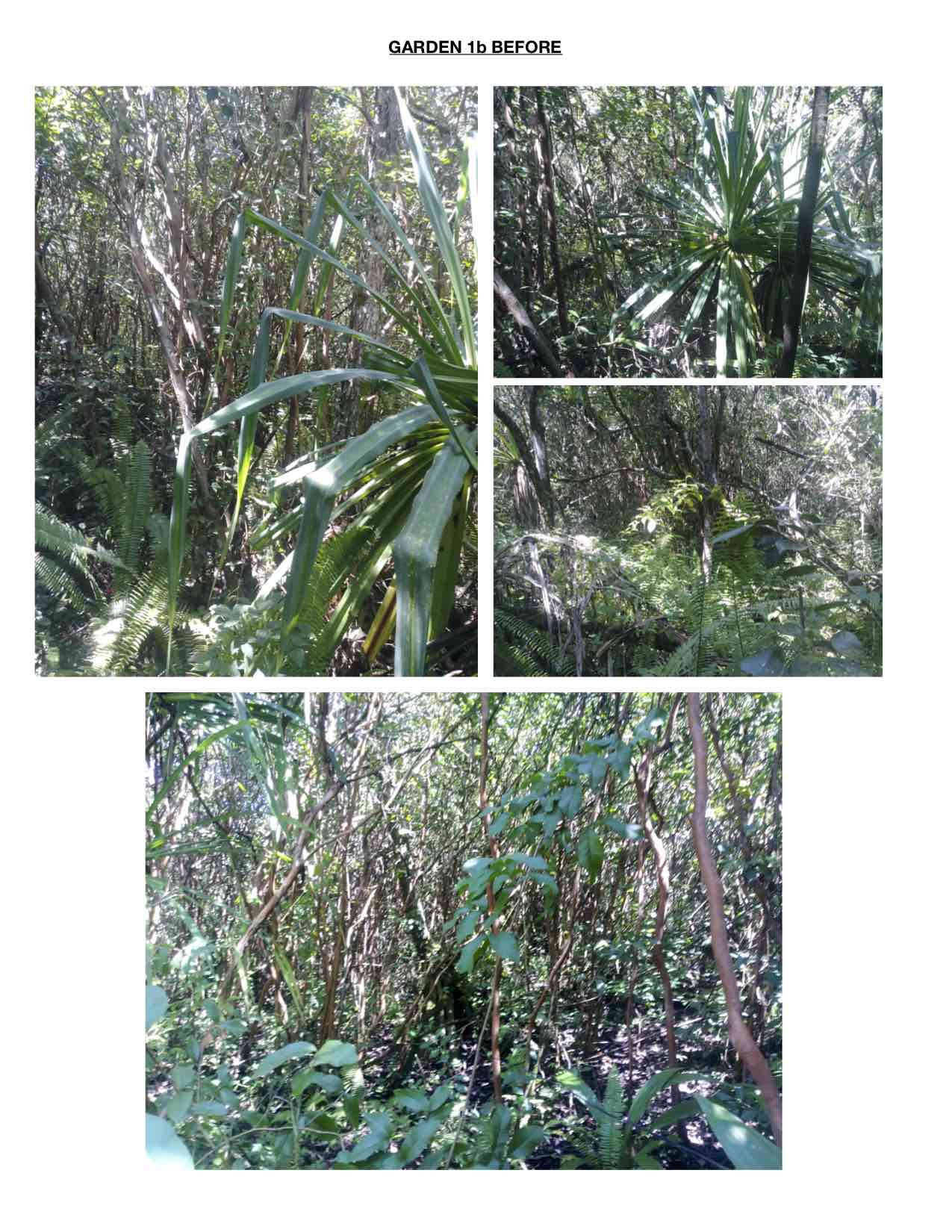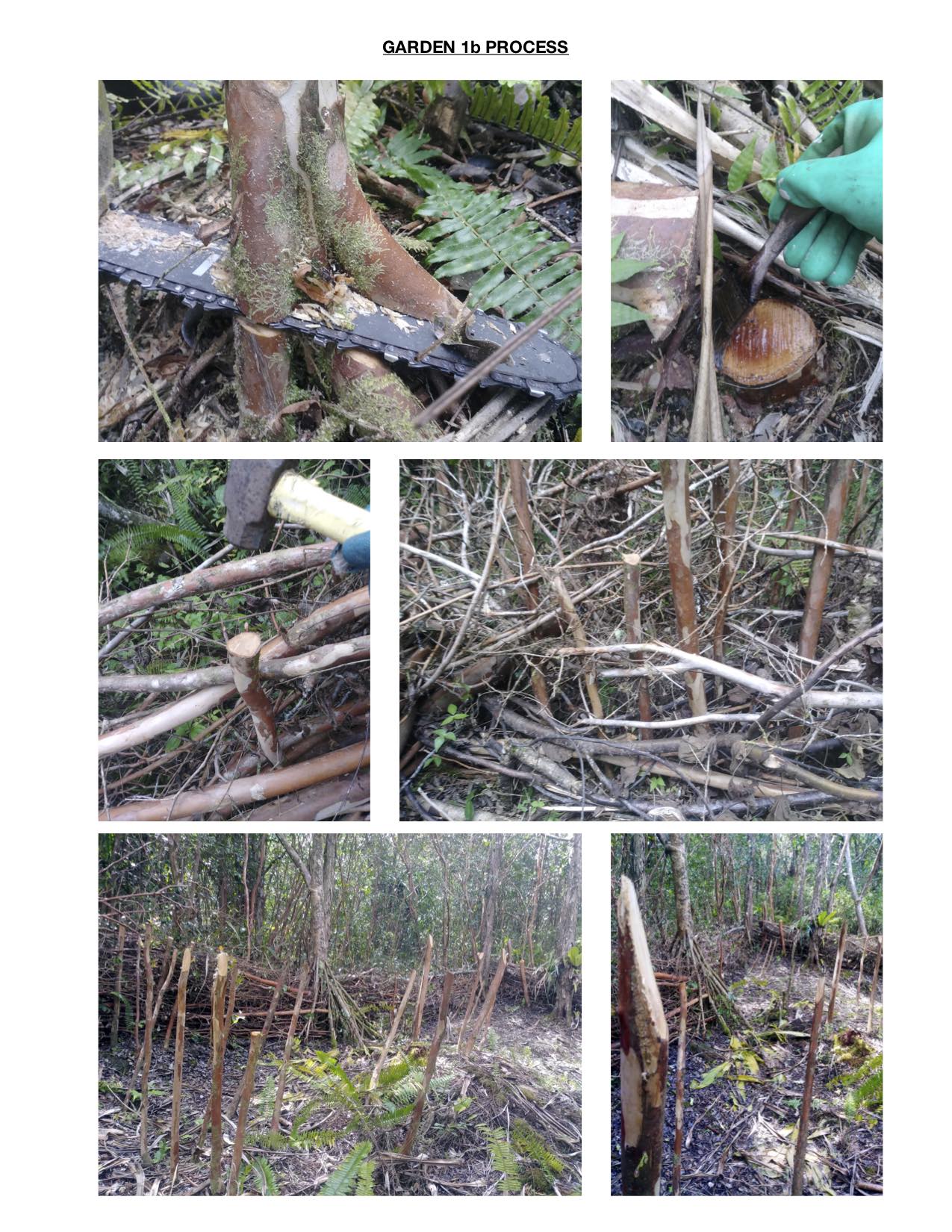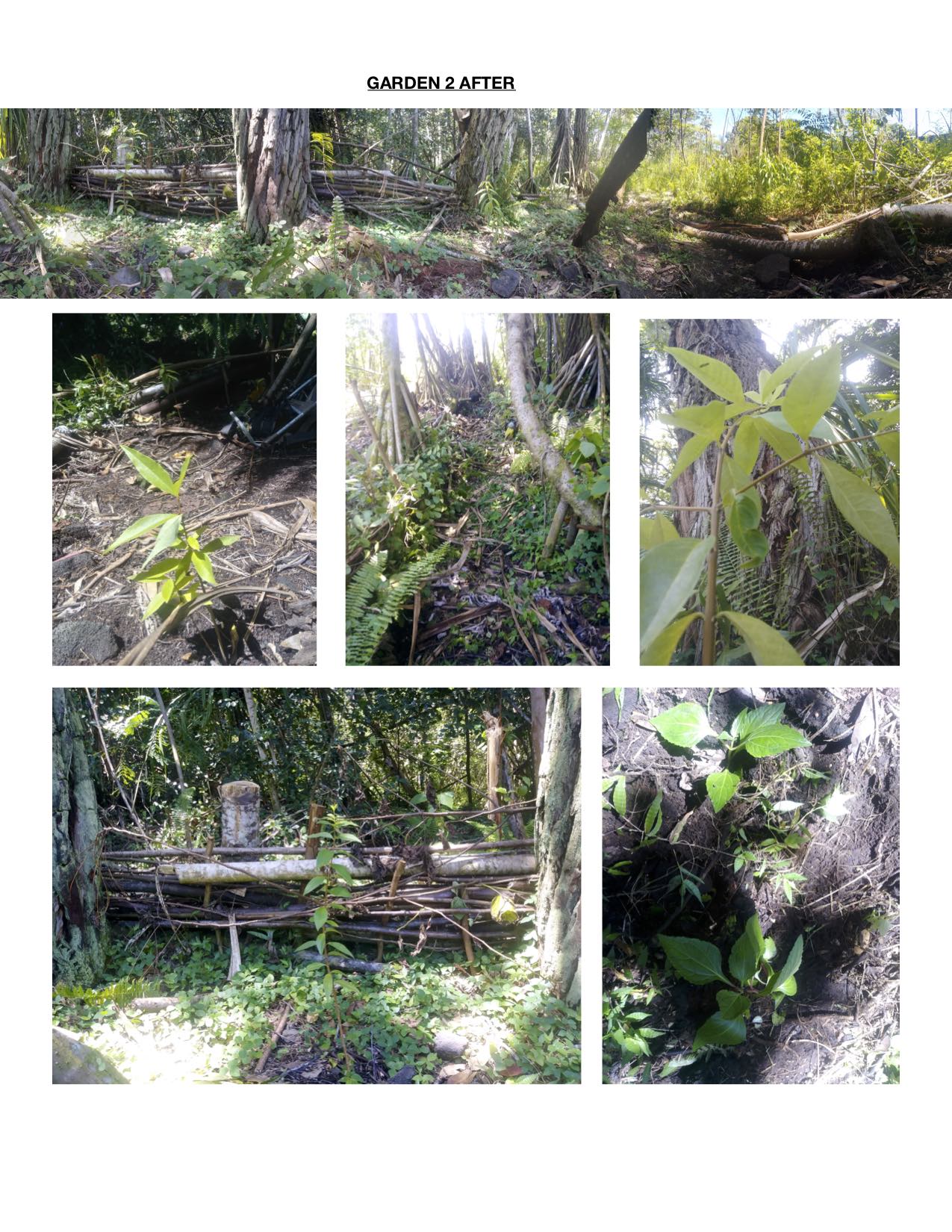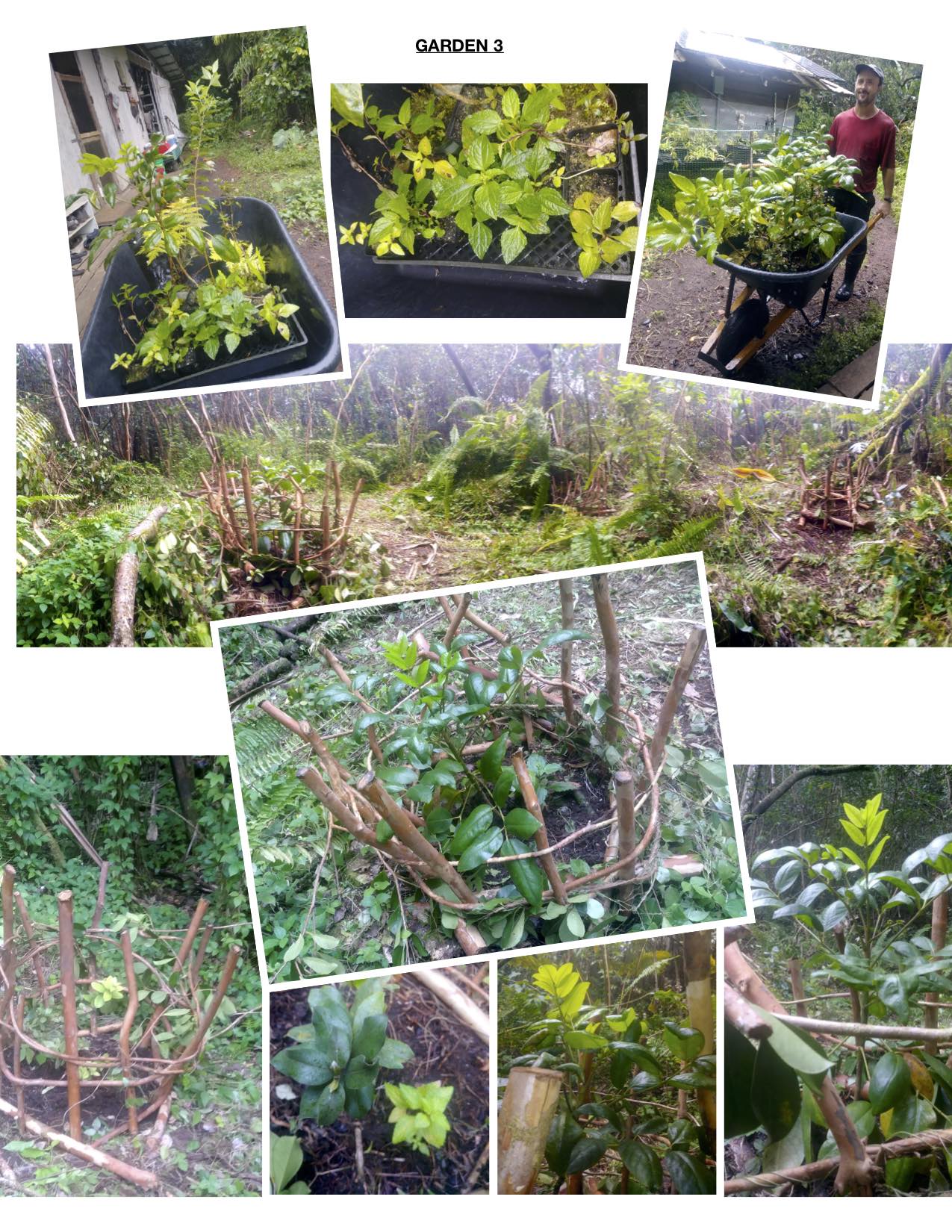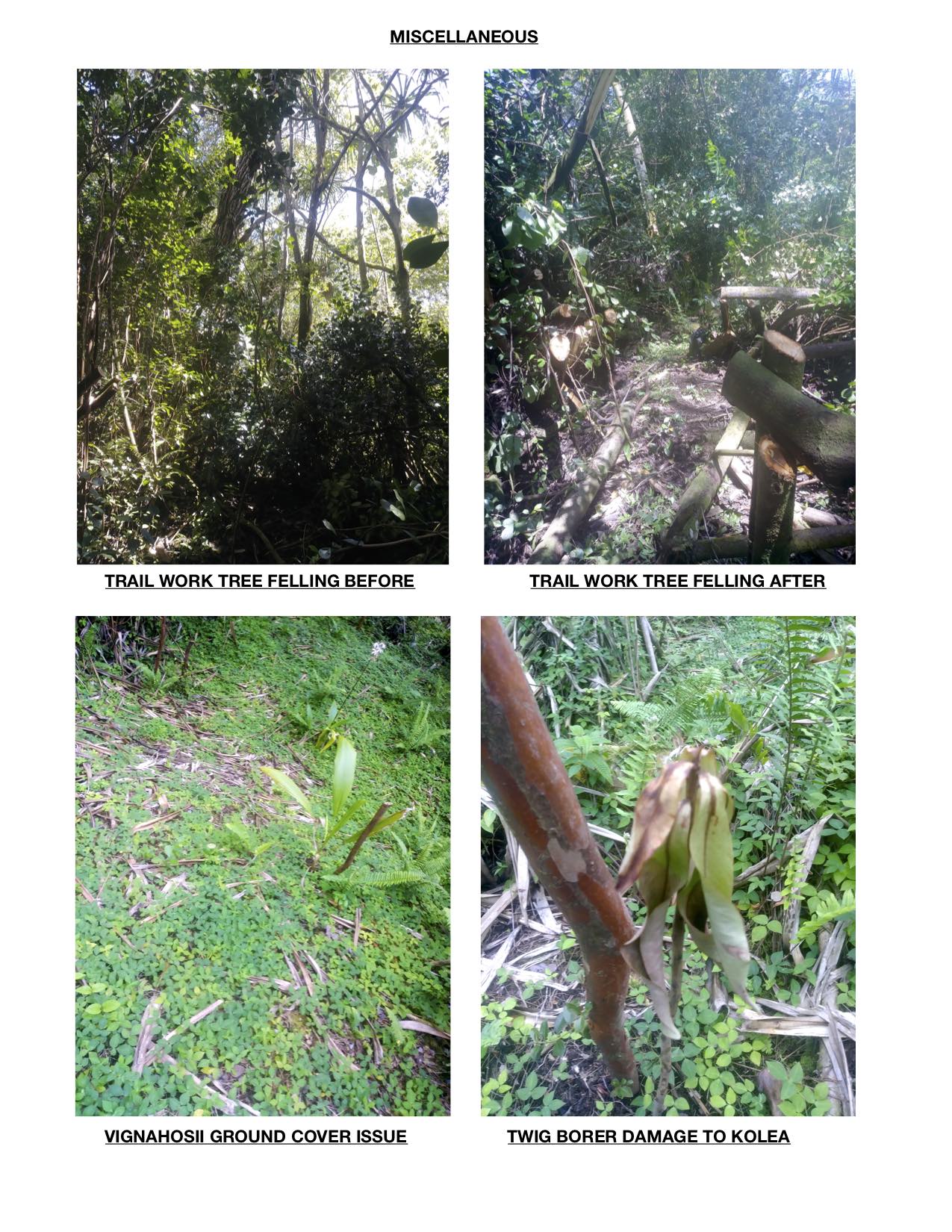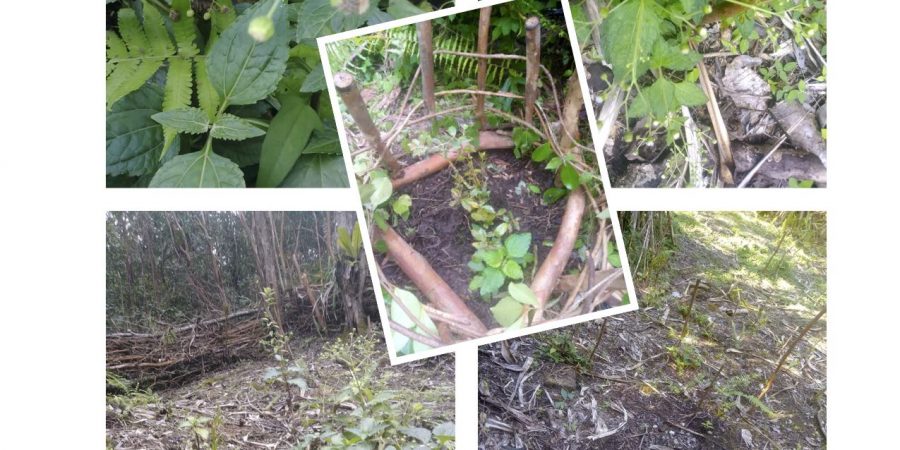HALEPUA`A SECTION NANAWALE FOREST RESERVE FOREST RESTORATION
FINAL REPORT GRANT CYCLE 2 10/22/2019 – 4/9/2020
This report is laid out according to the organization of the SCOPE OF WORK from the original contract, attached. The paragraphs of this report have been cut and pasted from a combined document (also attached) based on that SCOPE OF WORK formatted so that each category of work is immediately followed by its final report information and its derived SCOPE OF WORK language for the next grant. Photographs, rather than embedded, will be included at the end of the document and captioned.
Little Fire Ant control. Borders continued to be treated to calendar regularity, with one exception of a 2 week lapse for half of the SW LFA barrier. Since it is wintertime and the ants move slowly, this discrepancy didn’t allow the LFA across. Testing occurred on schedule every 12 weeks.
Considerable time was spent early in the grant cycle testing for and mopping up areas along the “bulge” of the SW LFA break; modification of the border trail was unnecessary. Deep testing of the furthest half of the mop-up area indicated zero incursions. The nearest half should still receive follow-up testing.
Labor was not devoted to tree-to-tree trail improvement on the SW break at all. On the NE break, 3 hrs. were devoted to the worst patches. The exploratory excursion with the supervisor was not undertaken.
Gradual changes in application of the Bifenthrin have occurred to increase efficacy. I now apply 8 gallons per barrier, rather than 6, and make sure to deliver the spray slowly and thoroughly across the full 10’ swath. At hotspots, a stream is directed into the 10-15’ range.
In conclusion, it appears that our combined techniques are effective at keeping the LFA out of the forest along these borders through which infestation could occur. It is encouraging that less grant money went to LFA work during this cycle while success keeping the LFA out was maintained and moderate improvements were made. I expect that with a similar 35% allocation towards LFA in the next cycle, the borders can be brought to a state in which the poisoning can occur effectively and predictably with considerably less maintenance.
Nonnative flora. Weed winch, herbicide, and manual removal have been the primary means of control during this cycle. Details of weeding are discussed in outplantings, below.
Nonnative fauna. Pua`a control has remained the priority, and two types of physical barriers, constructed of waiawi, have been implemented in major plantings. A combined rock/log barrier has been used with another major planting. Twig borer fungus treatments are always applied to newly planted kolea and kopiko, although apparently with not much effect.
Trail maintenance. The trail has continued to be maintained, although the 12 week expectation hasn’t needed to be strictly maintained. Oftentimes, a hand-saw carried along with the backpack sprayer is enough to remove obstructions. The full series of trails has been circumnavigated with chainsaw at least once during this past cycle, and most portions have been visited twice. At least two major multiple-tree collapses have been cleaned up, and the portable chainsaw is a godsend for expediting such work.
Outplanting/Maintenance: 108 trees were planted this grant cycle, 8 more than proposed. Details below.
New Outplantings: Garden 1b was established according to the Scope of Work template. All aspects in the description were implemented. See photos attached. Physical removal of waiawi is probably 98% complete (a few small seedlings remain, and also some re-growth on incompletely poisoned stumps). 56 trees were planted in this area. A small portion of the mos recently planted area has been delineated as a kamanamana ground-cover area. Vignahosii is the prevalent ground-cover in the rest of the garden, posing a considerable nuisance in that its rapid growth necessitates weeding from the native saplings every month. Within Garden 1 are about 25 plants from garden 1a, which were originally protected with warp-and-weft cage sticks. We shall see whether pigs are able to penetrate through the waiawi border fence, and if so, whether the presence of cage sticks protects these 1a trees compared to their exposed 1b neighbors.
Garden 2 was established using a combined protection method. Melochia, albizia, and cecropia trees were felled into an already jumbled area nearer to private properties. This area seems difficult for the pig to penetrate, and the pig would not be expected to approach from this direction, anyway (although this property is a pig sanctuary). The forest edge of this elongated planting area is bordered by the trail. A combination of bulldozed boulders, dead felled tree sections of various ages, and cage sticks driven in with a sledge were assembled into a fence/wall. This garden has relatively bare soil and could use some ground cover plantings, discussed below.
Trail plantings. Garden 3 was established along the Connector Trail West in an area of mixed light waiawi, ti, and hala, with a small akia, a small `ohe, and a magnificent hapu`u are already growing. The area proved receptive to 16 more plants (12 `ohi`a, 4 `ohe). A different strategy was employed. The mixture of amounts and levels of existing flora seemed to provide, with selective removal of waiawi (manual, weed winch, and stump poisoning), an ideal sun:shade ratio. Small amounts of maile pilau, and more significant clidemia and woody melastoma were removed by root, leaving ferns and vignahosii. A significant amount of mature and seedling waiawi was left, and trees were planted in 24-32” cage stick circles woven with narrow waiawi. Each tree was accompanied by a kamanamana start. The experiment in this garden is to attempt to raise up a canopy of natives while progressively, rather than initially, removing the waiawi presence.
Further north along this trail, almost to its intersection with Connector Trail North, a fallen hala provided opening for two plantings: a hapu`u and an akia.
Legacy Outplantings. Area ML2 was weeded twice during the previous grant cycle, but because of full sun and very quick advance of vignahosii, and damage from the falling of a very large dead `ohi`a, 15% of the plantings were lost. Donated labor has refreshed maintenance and planting in this area, as well as extending its northern border towards re-joining area ML1.
Area ML1 was explored once, weeded twice, and assessed for re-planting.
Existing plantings in the `ohe grove were periodically weeded. As per March progress report re-negotiation, the melochia problem was not taken on.
Trail plantings. All trail plantings were weeded with regularity, and some were discovered for the first time by walking the trails more slowly and keeping an eye out. This process is what presents areas for expansion and establishment of trail plantings. I am confident that I am now aware of 95% or more of trail plantings.
Re-plantings. In Garden 1a, four kolea and kopiko which died of stem borer were re-planted with `ohi`a. As stated above, donated labor re-planted losses in area ML2.
Maintenance. For maintenance, all areas have been maintained in a timely fashion, except for a small amount of loss in area ML2. The principle threat in all areas is vignahosii (see photo). This is a most difficult-to-weed vine, due to a proliferation of multiple nodal rootings, the small size of the vine (snaps easily without getting the root), and tenacity of the roots themselves. Its threat to plantings is moderate. It moves quickly and will stifle a small tree within a month. It is, however, easy and quick to remove from trees that are visited with regularity. Supervisor has indicated that herbicide is an option for treating vignahosii, but this begs the question of what will replace it?
Kamanamana is the likeliest option; outside of expectations in this SCOPE OF WORK, I have accompanied 18 plantings with kamanamana seedlings, consolidated (with the help of supervisor) kamanamana seedlings in the nursery, established an independent kamanamana nursery, and established a 150 ft2 kamanamana patch in a corner of Garden 1b.
Due to abundant rain during this past winter, no plantings have required watering, although all plantings have been accompanied by fertilized water when initially placed in the ground. Since the pua`a fences and cage sticks are new, no maintenance has been required.
Administration. Record-keeping has been consistent, primarily through the attached “Diga Kern Halepua`a Forestry Log Cycle 2.” Breakdown of work hours has been according to previous log categories, rather than SCOPE OF WORK. The inventory and rough mapping, again according to early March re-negotiation, has been undertaken, but remains largely unaccomplished. This document, with attached photographs and map, may be printed or condensed to replace MOP office display board. Grantee has agreed to donate time partnering with supervisor to give presentation at annual meeting, once shelter-in-place is lifted. This document will also be uploaded to the project’s webpage.
Estimates of percentage breakdowns. Actual figures for this cycle were 86% labor, 10% assets/supplies, and 4% tax. Assets purchased were a second chainsaw battery and professional arborist hardhat/ear protection so that upcoming longer sessions of LFA border work can take place safely.
This grant came in at just under 114 hrs. of labor, with 21% going to planting/tending; 35% to LFA, 41% to invasive plant work, and 3% to admin/office.
